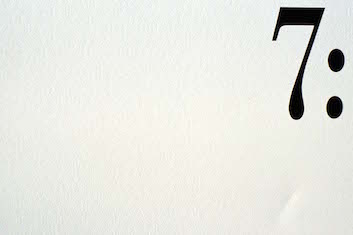Colons, like semicolons, are a sadly neglected punctuation mark. They deserve to have their versatility recognised and used far more widely. Unlike semicolons, which have two functions (see my earlier post on ‘What do I use a semicolon for?’), colons have a number of uses. Here are the seven main uses for a colon.

- The most common way to use colons is to introduce a list (whether it’s a dot-point list, numbered list or simply a list that runs on in normal text). Generally, your text will read better if you have a full clause (a short, complete sentence) before the colon (as I did before the start of this list). While many people do use a colon to start a list by placing the colon between a verb and direct object (such as We recommend: ) or between verb and complement (The reasons are: ) even between pronoun and object (Colons can be used for: ), it’s usually better not to. The simplest way is to use ‘the following’ before the colon, if you can’t think of another way of creating a full sentence.
- Colons are used to introduce an example in a sentence: for example, just like this! In some ways, this is the same use as no. 1, if you consider an example as a list made up of just one item. Again, it is better to have a full sentence before the colon.
- Colons are also used to introduce an amplification of the first part of the sentence (and again, this use tends to overlap the first two uses). Susan finds grammar endlessly interesting: she’s already written a dozen posts just on punctuation. Many people would use a dash in this example. Drop the overused and misused dash, and use a colon. Your writing will immediately look more impressive.
- Colons also have some quite specific uses. They are used to separate the title and subtitle of a book (but this can be thought of a subset of the previous use, if you consider a subtitle to be an amplification of the title): Looking Back as well as Forward: A History of Ballarat Community Health.
- Colons are used in mathematical ratios: Cakes are generally 1:1 sugar to flour, by weight. Note that in this case, there is no space on the right side of the colon. This holds whether the ratio is expressed in in numbers or words. The childcare centre’s staff:children ratio is 1:4 (if children had a space before it, the colon would look like it was introducing a list, example or amplification, rather than being a ratio).
- Colons are also used to separate chapter and verse in biblical citations. 1 Corinthians 13:4–13 is often used at weddings. Again, there should be no space on either side of the colon.
- Colons can be used to introduce a quotation or direct speech in narrative. St Paul’s first letter to the Corinthians is often used at weddings: ‘Love is patient, love is kind’. In playscripts, colons are always used after the speaker’s name, before the dialogue. Vladimir: We’re waiting for Godot.
Don’t be afraid of the colon. Embrace this useful punctuation mark, and revel its many uses.

If you have found this post interesting, you can find a full index to my other posts on the index page. To be notified when I post a new topic, follow me on Facebook! If you have any particular questions you’d like me to answer in future posts, just send me a message. I’m always interested to learn what people think, and how you came across this site, so please post a comment.
If you think you would be interested in either my complete grammar course or an individual customised online course (particularly suited for people who don’t live in Melbourne), just click your preferred option.